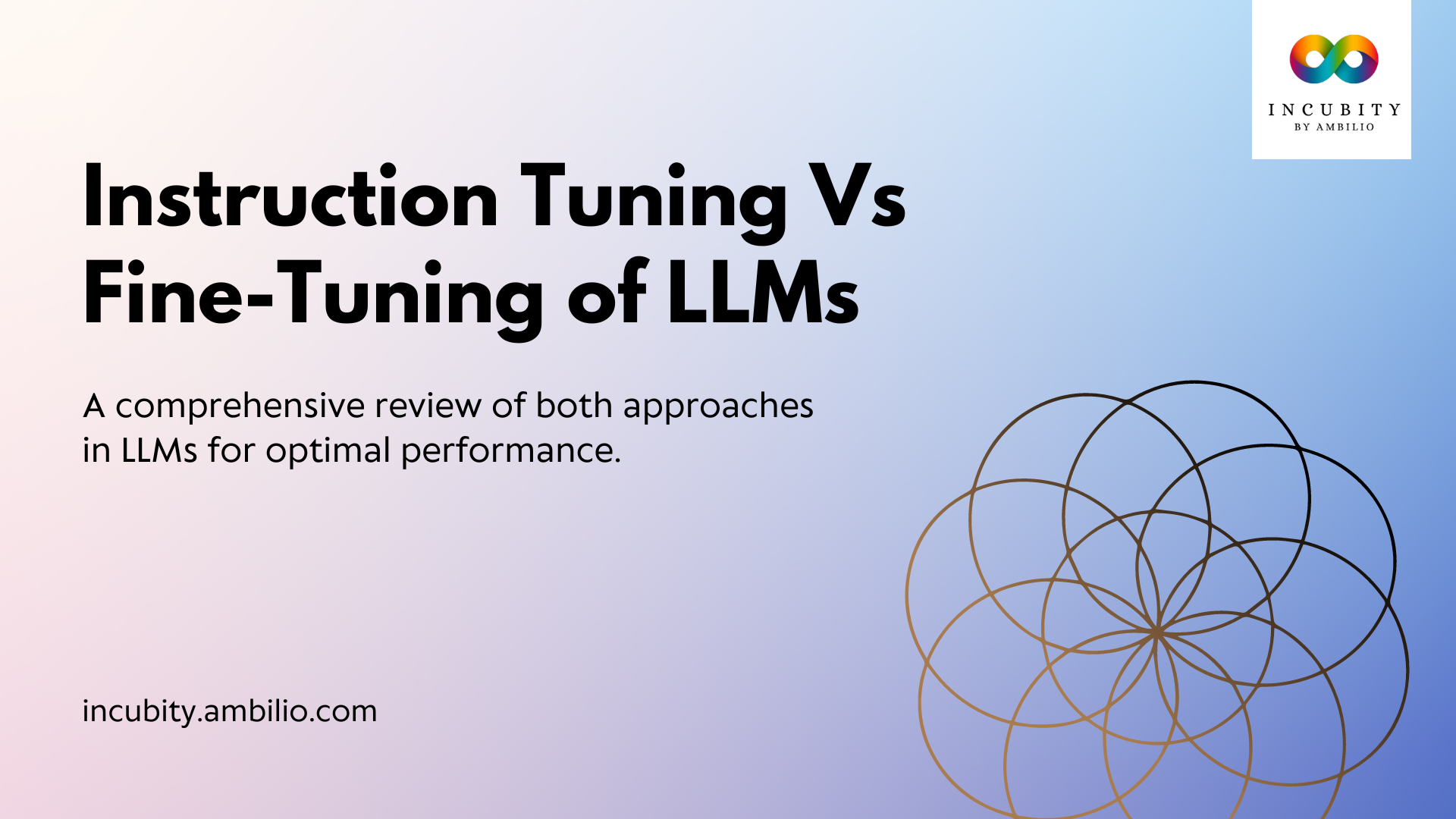Large language models (LLMs) have transformed natural language processing (NLP) by showcasing remarkable capabilities across a wide range of tasks. However, to achieve optimal performance for specific applications, these models often require additional training beyond their initial pre-training. Two popular approaches for adapting LLMs are instruction tuning and fine-tuning. While both methods aim to enhance model performance, they differ significantly in their approach, use cases, and outcomes. This article presents a comprehensive comparative review of instruction tuning vs fine-tuning of LLMs, detailing their respective characteristics, applications, and impacts.
What is Fine-Tuning?
Fine-tuning is a general technique used to adapt pre-trained LLMs for downstream tasks. It involves further training the model on a smaller, task-specific dataset to fine-tune its parameters and improve performance on that particular task. The fine-tuning dataset typically consists of input-output pairs relevant to the target task.
Key Characteristics of Fine-Tuning:
- Task Specificity: Fine-tuned models are optimized for a particular task or domain, often achieving superior performance in that area.
- Smaller Datasets: Fine-tuning can be effective with relatively smaller, task-specific datasets.
- Potential for Overfitting: Care must be taken to avoid overfitting to the fine-tuning dataset, which can reduce generalization.
- Architectural Modifications: Fine-tuning may involve changes to the model architecture, such as adding task-specific layers.
- Specialized Deployment: Fine-tuned models are typically deployed for specific applications rather than as general-purpose tools.
What is Instruction Tuning?
Instruction tuning, on the other hand, is a technique that teaches LLMs to follow natural language instructions for performing various tasks. This approach involves training the model on a diverse set of tasks, each presented with a natural language instruction.
Key Characteristics of Instruction Tuning:
- Generality: Instruction-tuned models can handle a wide variety of tasks without needing task-specific fine-tuning.
- Zero-shot Learning: These models can often perform new tasks they haven’t explicitly seen during training, as long as the instructions are clear.
- Maintained Flexibility: Instruction-tuned models retain their general-purpose nature and can still be used for diverse applications.
- Large-scale Training: This approach typically requires a substantial dataset of instruction-task pairs covering many different domains.
- Consistency in Interaction: Users interact with the model through natural language prompts, providing a uniform interface across tasks.
Instruction Tuning Vs Fine-Tuning: Differences and Similarities
Here is a crisp and clear comparison to highlight the differences between instruction tuning and fine-tuning:
| Feature | Instruction Tuning | Fine-Tuning |
|---|---|---|
| Task Diversity | High, handles various tasks | Low, optimized for specific tasks |
| Data Requirement | Large, diverse instruction-task pairs | Smaller, task-specific datasets |
| Interaction | Natural language prompts | Task-specific input-output pairs |
| Performance | Moderate across tasks | High on specific tasks |
| Flexibility | High, general-purpose | Low, specialized |
| Overfitting Risk | Lower, due to task variety | Higher, requires careful management |
| Resource Needs | High, extensive computational resources | Moderate, depends on dataset size |
| Adaptability | High, adapts to new tasks easily | Low, needs retraining for new tasks |
Recent Developments and Hybrid Approaches
As the field of LLMs evolves, researchers are exploring hybrid approaches that combine the strengths of both instruction tuning and fine-tuning. Some notable developments include:
- Multi-task Fine-Tuning: This approach fine-tunes models on multiple related tasks simultaneously, aiming to balance task-specific performance with some degree of generalization.
- Prompt Tuning: A lightweight alternative to full fine-tuning, where only a small set of task-specific “soft prompts” are learned while keeping the main model parameters frozen.
- Parameter-Efficient Fine-Tuning: Techniques like LoRA (Low-Rank Adaptation) allow for task-specific adaptation with minimal additional parameters.
- Instruction Tuning with Task-Specific Modules: Some architectures combine a general instruction-tuned base with swappable task-specific components for enhanced performance.
Applications and Impact
Instruction tuning has become an integral part of the LLM lifecycle, with models like Meta’s LLaMA 2 being offered in variants fine-tuned for dialogue and coding. The incorporation of instruction tuning, along with reinforcement learning from human feedback (RLHF), has played a significant role in the development of modern LLMs that have initiated the current era of generative AI.
Instruction tuning has applications in various domains, such as task-oriented dialogue systems, question-answering, and open-ended text generation. By improving the model’s ability to follow instructions, instruction tuning enables more natural and effective interactions between humans and AI systems.
Final Words
Both instruction tuning and fine-tuning play crucial roles in adapting LLMs for real-world applications. Instruction tuning offers versatility and the potential for zero-shot learning across diverse tasks, making it ideal for general-purpose AI systems. Fine-tuning, conversely, provides a path to achieving peak performance on specific tasks, crucial for specialized applications.
As research in this field progresses, we can expect to see more sophisticated hybrid approaches that leverage the strengths of both methods. The choice between instruction tuning and fine-tuning—or a combination of both—will depend on the specific use case, available resources, and the balance required between task-specific performance and general applicability.
This article has presented a comprehensive comparative review of instruction tuning versus fine-tuning of LLMs, detailing their respective characteristics, applications, and impacts. Understanding these approaches and their trade-offs is essential for effectively harnessing the power of large language models in various domains and applications.



